РУССКИЙ СПГ: 140 МЛН. Т.
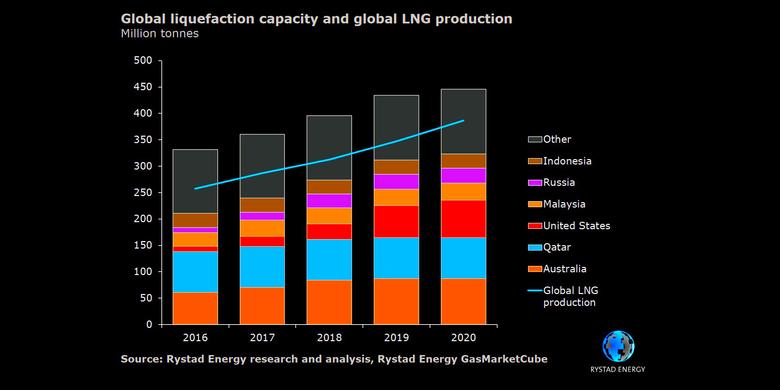
МИНЭНЕРГО РОССИИ - 2 октября - Президент Российской Федерации Владимир Путин принял участие в пленарном заседании Международного форума «Российская энергетическая неделя».
В ходе своего выступления Владимир Путин отметил, что форум набирает обороты: в этом году 10,5 тысячи участников, более 200 компаний из 80 стран мира.
«В основе такого интереса лежит стремление к сотрудничеству, повышению доверия – всё это нацелено на технический и технологический прогресс ТЭКа, обеспечение энергетической и экологической безопасности планеты», - сказал Президент.
По словам Владимира Путина, ярким примером международного диалога стала сделка ОПЕК+ – первое в истории успешное взаимодействие стран – участниц ОПЕК и государств, не входящих в эту Организацию.
«Россия остаётся ответственным участником ОПЕК+. И мы уверены, что наше сотрудничество будет развиваться. Причём речь идёт не только об уровне добычи нефти, но и о тесной кооперации по таким направлениям, как внедрение новых технологий добычи, переработки, транспортировки углеводородов, решение экологических проблем», - добавил Президент.
Владимир Путин рассказал, что в ближайшее время потребление энергоресурсов вырастет как в Азиатско-Тихоокеанском регионе, так и в Европе.
«Мы продолжаем реализацию крупных инфраструктурных проектов, таких как газопроводы «Турецкий поток», «Северный поток-2». Морской участок «Турецкого потока» завершён, идут работы на суше. «Северный поток-2» также строится по графику: уже проложено свыше 82 процентов маршрута. Вновь подчеркну: эти проекты реализуются совместно с европейскими компаниями и носят исключительно коммерческий характер. Хочу это еще раз подчеркнуть, здесь нет никакой политической подоплёки», - сказал Президент.
Владимир Путин также поделился данными о поставках энергоресурсов в Китай: за последние 10 лет экспорт нефти увеличился в 4,5 раза, а нефтепродуктов – в два раза. К концу года будет запущен газопровод «Сила Сибири», по которому в КНР будет поставляться российский газ. Идет развитие нового направления – производства сжижкенного-природного газа.
«По некоторым оценкам, через 5–10 лет на долю СПГ будет приходиться половина мировой торговли газом. Низкая себестоимость добычи и привлекательная логистика делают российские СПГ-проекты одними из самых конкурентных в мире и позволяют рассчитывать на долгосрочный рост нашей доли на этом динамичном рынке. Мы рассчитываем к 2035 году выйти на уровень производства СПГ в 120–140 миллионов тонн в год», - отметил Президент.
Владимир Путин назвал российскую энергетику одной из самых низкоуглеродных в мире. Больше трети генерации приходится на гидро- и атомную энергетику; ещё 50 процентов – на газ. За последние пять лет введено 800 мегаватт мощностей на базе возобновляемых источников энергии. Строятся и проектируются объекты ещё на четыре тысячи 700 мегаватт.
«Электроэнергия от возобновляемых источников получает преференции на розничном рынке в нашей стране. Зафиксирована норма её обязательной и приоритетной закупки сетевыми организациями. То есть это реальные инструменты поддержки этого сектора энергетики.Рассчитываем, что принятые меры стимулируют собственные научные разработки, приток инвестиций в этот высокотехнологичный сегмент российской энергетики, гарантируют возврат капитала и высокую доходность вложенных средств», - высказал уверенность Президент.
-----
РУССКИЙ СПГ: 140 МЛН. Т.

U.S. EIA - In the first half of 2019, U.S. exports of crude oil increased to average 2.9 million barrels per day (b/d), an increase of 966,000 b/d from the first half of 2018. Also in the first half of 2019, U.S. crude oil exports set a new record-high monthly average of 3.2 million b/d in June 2019 (Figure 1). The number of U.S. crude oil export destinations also continued to grow, and now exceeds the number of U.S. crude oil import sources.
Asia was the largest regional destination for U.S. crude oil exports—1.3 million b/d in the first half of 2019—followed by destinations in Western Europe, which received 824,000 b/d. U.S. crude oil exports to North America, which almost exclusively go to Canada (the largest single destination for U.S. crude oil exports globally) did not change much from the first half of 2018 to the first half of 2019, averaging 458,000 b/d.
U.S. crude oil exports to Asia grew significantly in the first half of 2019, up 472,000 b/d (58%) compared with the same period in 2018, despite a large decrease in exports to China. U.S. crude oil exports to China in the first half of 2019 averaged 248,000 b/d (64%) less than the same period last year. This decrease largely reflects continuing trends from the second half of 2018 when U.S. crude oil exports to China decreased significantly.
Increased U.S. crude oil exports to other destinations in Asia offset the drop in volumes to China. U.S. crude oil exports to South Korea increased 278,000 b/d (246%), exports to India increased 154,000 b/d (114%), and exports to Taiwan increased 109,000 b/d (133%) in the first half of 2019 compared with the first half of 2018.
U.S. crude oil exports to Western Europe also increased 327,000 b/d (66%) during this time. First-half 2019 exports to the Netherlands increased 173,000 b/d (192%) and exports to the United Kingdom increased 74,000 b/d (53%) compared with first half 2018 (Figure 2).

As U.S. crude oil export volumes have increased, so have the number of export destinations. During first half of 2019, the number of U.S. crude oil export destinations surpassed the number of U.S. crude oil import sources. In 2009, the United States imported crude oil from an average of 35 sources each month. A decade later, in the first half of 2019, the average number of sources fell to 26. After the restrictions on exporting domestic crude oil were lifted at the end of 2015, the number of U.S. crude oil export destinations has increased to more than 30 as of the end of the first half of 2019 (Figure 3). Between January 2016 (the first full month of unrestricted U.S. crude oil exports) and June 2019, U.S. crude oil production has increased by 2.9 million b/d. During that same period, U.S. crude oil exports increased 2.7 million b/d, the equivalent of 98% of the absolute crude oil production increase.

Increasing U.S. crude oil production has both reduced crude oil imports and increased crude oil exports, but the reasons for changes in each are complex.
Fewer crude oil import sources is the result of increased U.S. production of light-sweet crude oils whereas most U.S. refineries are configured to process medium- to heavy- sour crude oils. The U.S. Energy Information Administration's (EIA) report Technical Options for Processing Additional Light Tight Oil Volumes Within the United States, explains how U.S. refineries have accommodated much of the growth in U.S. crude oil production since 2010 with two limited- or no-investment-cost options: displacing imports of crude oil (primarily light crude oil, but also medium crude oil) from countries other than Canada and increasing refinery utilization rates. Displacing light crude oil imports has both reduced the volume of crude oil the United States imports and the number of sources.
The increase in the number of U.S. crude oil export destinations is the result of
- Growing demand from refineries abroad for light-sweet crude oil
- Interconnected infrastructure to export greater volumes of U.S. crude oil
- Developing infrastructure to enable larger cargo sizes
National and international regulations increasingly limit the amount of sulfur present in transportation fuels. As global demand for heavy residual oils declines, many less complex refineries outside the United States, which can't process and remove sulfur from heavy-sour crude oils, are processing more of the lighter and sweeter crude oils. To supply this increasing demand, U.S. port infrastructure along the U.S. Gulf Coast is expanding to accommodate increased crude oil tanker traffic and larger crude oil tankers loading for export. In addition, new and expanded pipelines are being built to transport crude oil from areas such as the Permian and Eagle Ford to the U.S. Gulf Coast.
-----
Earlier:
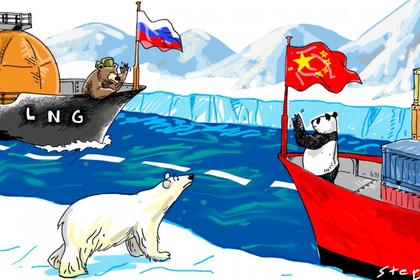
2019, October, 2, 12:05:00
U.S. RUSSIA, CHINA SANCTIONS
Treasury imposed sanctions on Moscow-based Maritime Assistance LLC, which it called a front company for Russian shipping company, Sovfracht, which has been subject to US sanctions since September 2016 for operating in Crimea. Russia annexed Crimea from Ukraine in March 2014, a move which is not recognized by most of the international community.

2019, October, 2, 11:25:00
YAMAL LNG: FOURFOLD
Planned 2019 volumes of LNG delivered eastbound to the Asian Pacific markets via the NSR will be increased by more than 4 times compared to last year.
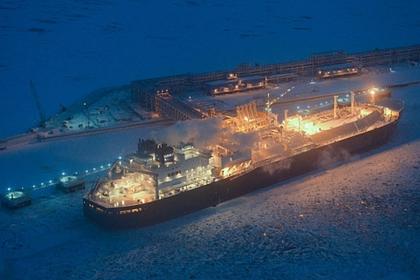
2019, October, 2, 11:20:00
YAMAL LNG CAPACITIES
The Yamal LNG project has all the necessary capacities to ensure supplies of LNG produced to customers in accordance with contractual obligations within the agreed timelines.
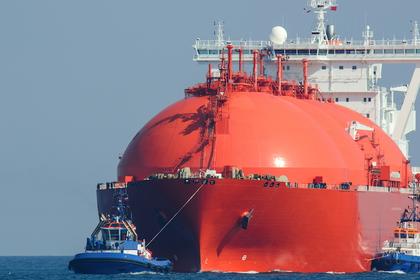
2019, September, 27, 13:25:00
LNG INVESTMENT $50 BLN
“This year, 2019 already broke the highest amount of (final investment decisions) for the first time ever, $50 billion,” he told the annual LNG Producer-Consumer conference in Tokyo.
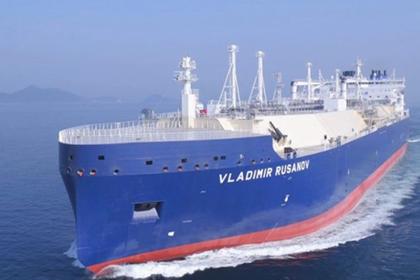
2019, September, 27, 13:15:00
THE THIRD RUSSIAN LNG
Novatek already has a Yamal LNG plant running at annual capacity of 16.5 million tonnes of super-cooled gas. It plans to start another project, Arctic LNG 2, in 2023.
All Publications »
Tags:
РОССИЯ,
ГАЗ,
ЕВРОПА,
СПГ














